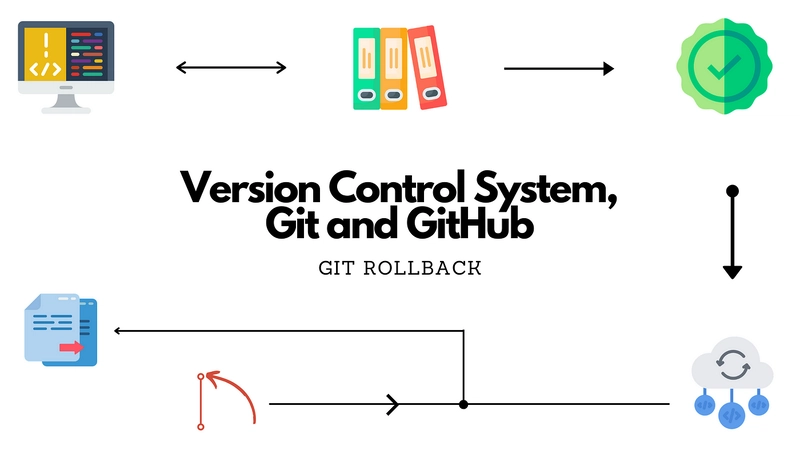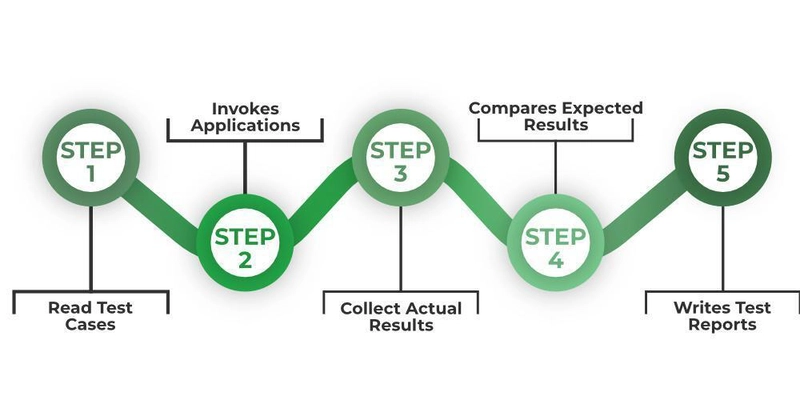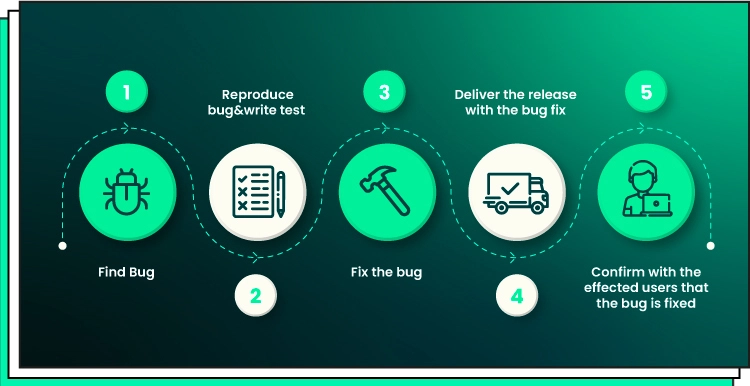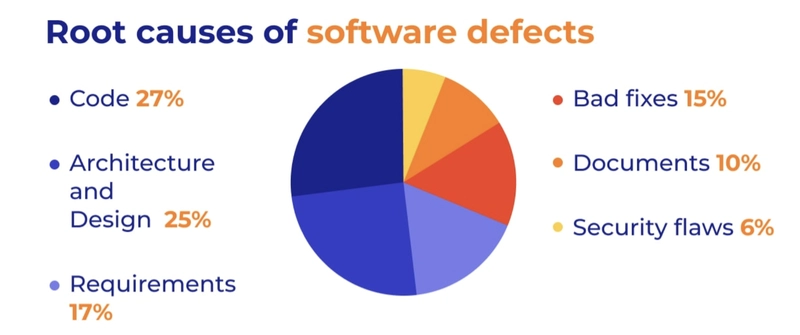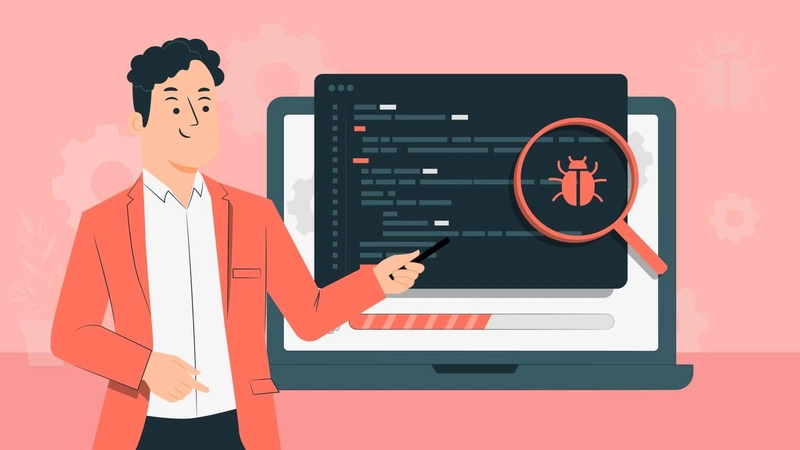Most Effective Approaches for Debugging Applications
Debugging is a cornerstone of software development, requiring a blend of analytical rigor, creative problem-solving, and proactive strategies to ensure applications deliver reliable performance and seamless user experiences. Bugs—whether minor glitches or critical failures—can erode trust, disrupt operations, and inflate development costs. According to a 2023 study by Tricentis, software defects cost businesses $2.41 trillion annually in the U.S. alone, underscoring the need for effective debugging practices. This article delves into the most effective approaches for debugging applications, weaving in expert insights as supporting evidence and grounding recommendations in data and practical tools to help developers identify, resolve, and prevent issues efficiently. Establish a Systematic Debugging Framework A structured debugging process is essential for tackling bugs methodically, reducing guesswork and preventing hasty fixes that introduce new problems. The process begins with reproducing the bug under controlled conditions to understand its triggers, followed by isolating the problematic component—be it a function, API endpoint, or database query. Tools like Chrome DevTools for web applications, GDB for C/C++ programs, or Visual Studio Debugger for .NET applications enable developers to set breakpoints, inspect variables, and trace execution flow. Analyzing logs, error messages, and user reports provides critical context, ensuring fixes address the root cause rather than symptoms. Vishal Shah, Sr. Technical Consultant at WPWeb Infotech, emphasizes this approach, stating, “The first step is to identify the bug by replicating the issue. Understanding the exact conditions that trigger the problem is crucial.” Shah’s workflow includes rigorous testing—unit, integration, and regression tests—followed by peer reviews and staging deployments. Data from GitLab’s 2024 DevSecOps Report supports this, revealing that teams with structured testing processes reduce bug-related delays by 30%. Tools like JUnit for unit testing or Cypress for end-to-end testing automate validation, while CodeClimate facilitates peer reviews, ensuring robust fixes. Restore Stability with Version Control When a bug disrupts a production environment, reverting to a known working state can minimize user impact and provide a stable baseline for investigation. Version control systems like Git or GitHub enable precise rollbacks, preserving the ability to analyze faulty code. A 2022 JetBrains survey found that 92% of developers use Git, with 65% citing rollbacks as a key benefit for debugging. Odellé Joubert, Chief Operating Officer at Dentaly Go, illustrates this: “Rolling back recent changes is the best way to correct bugs because it brings everything back to a version you know worked.” When a currency formatting update caused their pricing estimator to fail, Joubert’s team reverted the change, restoring functionality and isolating the issue in a controlled setting, highlighting version control’s role in high-stakes debugging. Isolate and Simplify to Pinpoint Root Causes Complex applications, with their interwoven layers of front-end, back-end, and database logic, often obscure bugs. Simplifying the problem by isolating components—such as a React component, a REST API endpoint, or a PostgreSQL query—helps developers focus on the failure point. Spencer Romenco, Chief Growth Strategist at Growth Spurt, shares a case study: “Simplifying and isolating the problem has always been the most reliable way to track down bugs.” When a content delivery dashboard failed to display uploaded videos, Romenco’s team isolated the front-end with mock data, ruling out UI issues, and tested the API with curl, uncovering a backend file path error. This divide-and-conquer approach, supported by tools like Postman for API testing, reduces complexity and accelerates resolution. Borets Stamenov, Co-Founder and CEO of SeekFast, reinforces this, advising, “Reproduce the bug first—consistently. If you can’t trigger it on demand, you’re guessing.” Stamenov’s method involves isolating the smallest code chunk and using print statements or debuggers like PyCharm’s debugger to compare expected versus actual values. A 2023 Stack Overflow Developer Survey found that 78% of developers rely on debuggers for bug isolation, underscoring their effectiveness in targeting root causes. Harness Structured Logging for Clarity Structured logging transforms debugging by providing a detailed, searchable record of an application’s state, including variable values, stack traces, and user actions. According to Gartner, organizations with robust logging systems resolve production issues 40% faster. Doug Crawford, President and Founder of Best Trade Schools, highlights their value: “Implementing a structured logging system… makes isolating the problem straightforward.” Tools like Sentry for real-time error tracking, Log4j for Java applications, or ELK Stack for log aggregati

Debugging is a cornerstone of software development, requiring a blend of analytical rigor, creative problem-solving, and proactive strategies to ensure applications deliver reliable performance and seamless user experiences. Bugs—whether minor glitches or critical failures—can erode trust, disrupt operations, and inflate development costs. According to a 2023 study by Tricentis, software defects cost businesses $2.41 trillion annually in the U.S. alone, underscoring the need for effective debugging practices. This article delves into the most effective approaches for debugging applications, weaving in expert insights as supporting evidence and grounding recommendations in data and practical tools to help developers identify, resolve, and prevent issues efficiently.
Establish a Systematic Debugging Framework
A structured debugging process is essential for tackling bugs methodically, reducing guesswork and preventing hasty fixes that introduce new problems. The process begins with reproducing the bug under controlled conditions to understand its triggers, followed by isolating the problematic component—be it a function, API endpoint, or database query. Tools like Chrome DevTools for web applications, GDB for C/C++ programs, or Visual Studio Debugger for .NET applications enable developers to set breakpoints, inspect variables, and trace execution flow. Analyzing logs, error messages, and user reports provides critical context, ensuring fixes address the root cause rather than symptoms.
Vishal Shah, Sr. Technical Consultant at WPWeb Infotech, emphasizes this approach, stating, “The first step is to identify the bug by replicating the issue. Understanding the exact conditions that trigger the problem is crucial.” Shah’s workflow includes rigorous testing—unit, integration, and regression tests—followed by peer reviews and staging deployments. Data from GitLab’s 2024 DevSecOps Report supports this, revealing that teams with structured testing processes reduce bug-related delays by 30%. Tools like JUnit for unit testing or Cypress for end-to-end testing automate validation, while CodeClimate facilitates peer reviews, ensuring robust fixes.
Restore Stability with Version Control
When a bug disrupts a production environment, reverting to a known working state can minimize user impact and provide a stable baseline for investigation. Version control systems like Git or GitHub enable precise rollbacks, preserving the ability to analyze faulty code. A 2022 JetBrains survey found that 92% of developers use Git, with 65% citing rollbacks as a key benefit for debugging.
Odellé Joubert, Chief Operating Officer at Dentaly Go, illustrates this: “Rolling back recent changes is the best way to correct bugs because it brings everything back to a version you know worked.” When a currency formatting update caused their pricing estimator to fail, Joubert’s team reverted the change, restoring functionality and isolating the issue in a controlled setting, highlighting version control’s role in high-stakes debugging.
Isolate and Simplify to Pinpoint Root Causes
Complex applications, with their interwoven layers of front-end, back-end, and database logic, often obscure bugs. Simplifying the problem by isolating components—such as a React component, a REST API endpoint, or a PostgreSQL query—helps developers focus on the failure point. Spencer Romenco, Chief Growth Strategist at Growth Spurt, shares a case study: “Simplifying and isolating the problem has always been the most reliable way to track down bugs.” When a content delivery dashboard failed to display uploaded videos, Romenco’s team isolated the front-end with mock data, ruling out UI issues, and tested the API with curl, uncovering a backend file path error. This divide-and-conquer approach, supported by tools like Postman for API testing, reduces complexity and accelerates resolution.
Borets Stamenov, Co-Founder and CEO of SeekFast, reinforces this, advising, “Reproduce the bug first—consistently. If you can’t trigger it on demand, you’re guessing.” Stamenov’s method involves isolating the smallest code chunk and using print statements or debuggers like PyCharm’s debugger to compare expected versus actual values. A 2023 Stack Overflow Developer Survey found that 78% of developers rely on debuggers for bug isolation, underscoring their effectiveness in targeting root causes.
Harness Structured Logging for Clarity
Structured logging transforms debugging by providing a detailed, searchable record of an application’s state, including variable values, stack traces, and user actions. According to Gartner, organizations with robust logging systems resolve production issues 40% faster. Doug Crawford, President and Founder of Best Trade Schools, highlights their value: “Implementing a structured logging system… makes isolating the problem straightforward.” Tools like Sentry for real-time error tracking, Log4j for Java applications, or ELK Stack for log aggregation enable developers to pinpoint issues quickly, reducing the need for manual reproduction. For example, Sentry’s breadcrumb feature captures user actions leading to an error, offering a clear debugging trail.
Test Proactively to Uncover Hidden Bugs
Proactive testing is critical for catching bugs before they reach production. Comprehensive test suites—covering unit, integration, and UI scenarios—detect issues early in the Software Development Lifecycle (SDLC). Roman Surikov, Founder of Ronas IT, advises, “Ensure that [automated testing] covers various scenarios including unit, integration, and user interface testing to catch bugs early.” A 2024 Sauce Labs report found that teams with automated testing pipelines reduce bug-related costs by 25%. Tools like Jest for JavaScript unit tests, Selenium for UI testing, and TestRail for test management streamline this process.
Beyond standard tests, stress-testing with random inputs uncovers edge cases. Joe Schaeppi, CEO and Co-Founder of Solsten, notes, “Generating random, unexpected inputs stress-tests applications, uncovering edge case bugs that normal testing wouldn’t catch.” Fuzz testing tools like AFL or libFuzzer automate this, exposing vulnerabilities like buffer overflows. Similarly, Edward White, Head of Growth at beehiiv, advocates for chaos engineering: “Chaos Engineering is a great way to identify weaknesses in your applications before they cause issues.” Tools like Chaos Monkey simulate failures, improving resilience. A 2023 Gremlin study reported that 68% of organizations using chaos engineering reduced production incidents by over 20%.
Apply Incremental Fixes to Minimize Risk
Large-scale changes to fix a bug often introduce unintended side effects, making incremental fixes a safer approach. Robbin Schuchmann, Co-Founder of EOR Overview, advises, “Applying fixes incrementally is the most reliable way to correct bugs in applications.” By adjusting one variable or function at a time and validating each change with tools like pytest or Mocha, developers ensure fixes are effective without destabilizing the system. This aligns with test-driven development (TDD), which a 2022 IEEE study found reduces defect rates by 15%. Incremental fixes also simplify rollbacks, preserving stability.
Prevent Recurrence Through Root Cause Analysis
Fixing a bug is incomplete without preventing its recurrence. Root cause analysis (RCA), coupled with regression testing and documentation, ensures long-term reliability. Antony Marceles, Founder of Pumex Computing, emphasizes, “Fixing a bug is only part of the solution, preventing it from happening again is the real goal.” Marceles’ team uses regression tests via Robot Framework and code reviews with Gerrit to maintain quality, documenting fixes in Confluence to share insights. A 2023 Forrester report found that teams with strong RCA practices reduce recurring bugs by 35%.
Danil Temnikov, Software Engineering Team Lead at EPAM Systems, adds, “Everyone in the team should understand that the cost of fixing a bug increases the later it is found in the SDLC.” Temnikov’s focus on analyzing why bugs go undetected—often through tools like Jira for issue tracking—leads to preventive measures like enhanced test coverage or better documentation, aligning with data showing late-stage bug fixes cost 10-100x more than early fixes (IBM Systems Sciences Institute).
Leverage Static Code Analysis for Early Detection
Static code analysis tools scan code for potential issues before execution, catching bugs like null pointer dereferences or race conditions early. Daniel Vasilevski, Director and Owner of Bright Force Electrical, shares, “Utilizing static code analysis tools gives us a clear look at what’s going wrong before anything ever runs.” During a scheduling system rebuild, SonarQube flagged a concurrency flaw, preventing booking errors. A 2024 Synopsys report found that static analysis reduces production defects by 22%. Tools like ESLint for JavaScript or Checkstyle for Java complement testing, ensuring cleaner codebases.
Engage developers with Incentives
Motivating developers to proactively find and fix bugs elevates application quality. Andrew Bates, COO of Bates Electric, suggests, “Setting up a ‘Bug Bounty’ program for your internal teams is an effective way to correct bugs in applications.” By rewarding developers for identifying issues, teams foster ownership and collaboration. A 2023 Bugcrowd report found that bug bounty programs increase bug detection rates by 40%. Platforms like HackerOne or Bugzilla provide frameworks for structuring internal programs, boosting morale and creativity.
Harness AI for Debugging Efficiency
Artificial intelligence is transforming debugging by accelerating bug detection and suggesting fixes. Bill Mann, Privacy Expert at Cyber Insider, recounts, “I enlisted an LLM to help me, and within a few minutes, found the offending code and sorted out a workaround.” Tools like GitHub Copilot, DeepCode, or CodeQL analyze code patterns, identifying issues faster than manual reviews. A 2024 Gartner report predicts that AI-assisted debugging will reduce resolution times by 30% by 2027, making it a game-changer for complex projects.
Conclusion
Effective debugging combines systematic processes, proactive testing, and innovative tools to ensure applications remain robust and user-friendly. From structured frameworks and version control to AI-driven insights and team incentives, these strategies empower developers to resolve bugs efficiently while building resilient software. Supported by expert insights and data—such as the $2.41 trillion cost of defects or the 30% delay reduction from structured testing—these approaches transform debugging into a catalyst for excellence, fostering a culture of continuous improvement in software development.



































































































































































![[The AI Show Episode 143]: ChatGPT Revenue Surge, New AGI Timelines, Amazon’s AI Agent, Claude for Education, Model Context Protocol & LLMs Pass the Turing Test](https://www.marketingaiinstitute.com/hubfs/ep%20143%20cover.png)






























































































































![[DEALS] Koofr Cloud Storage: Lifetime Subscription (1TB) (80% off) & Other Deals Up To 98% Off – Offers End Soon!](https://www.javacodegeeks.com/wp-content/uploads/2012/12/jcg-logo.jpg)










































































































































_roibu_Alamy.jpg?width=1280&auto=webp&quality=80&disable=upscale#)


.webp?#)













































































































![M4 MacBook Air Drops to Just $849 - Act Fast! [Lowest Price Ever]](https://www.iclarified.com/images/news/97140/97140/97140-640.jpg)
![Apple Smart Glasses Not Close to Being Ready as Meta Targets 2025 [Gurman]](https://www.iclarified.com/images/news/97139/97139/97139-640.jpg)
![iPadOS 19 May Introduce Menu Bar, iOS 19 to Support External Displays [Rumor]](https://www.iclarified.com/images/news/97137/97137/97137-640.jpg)































































































